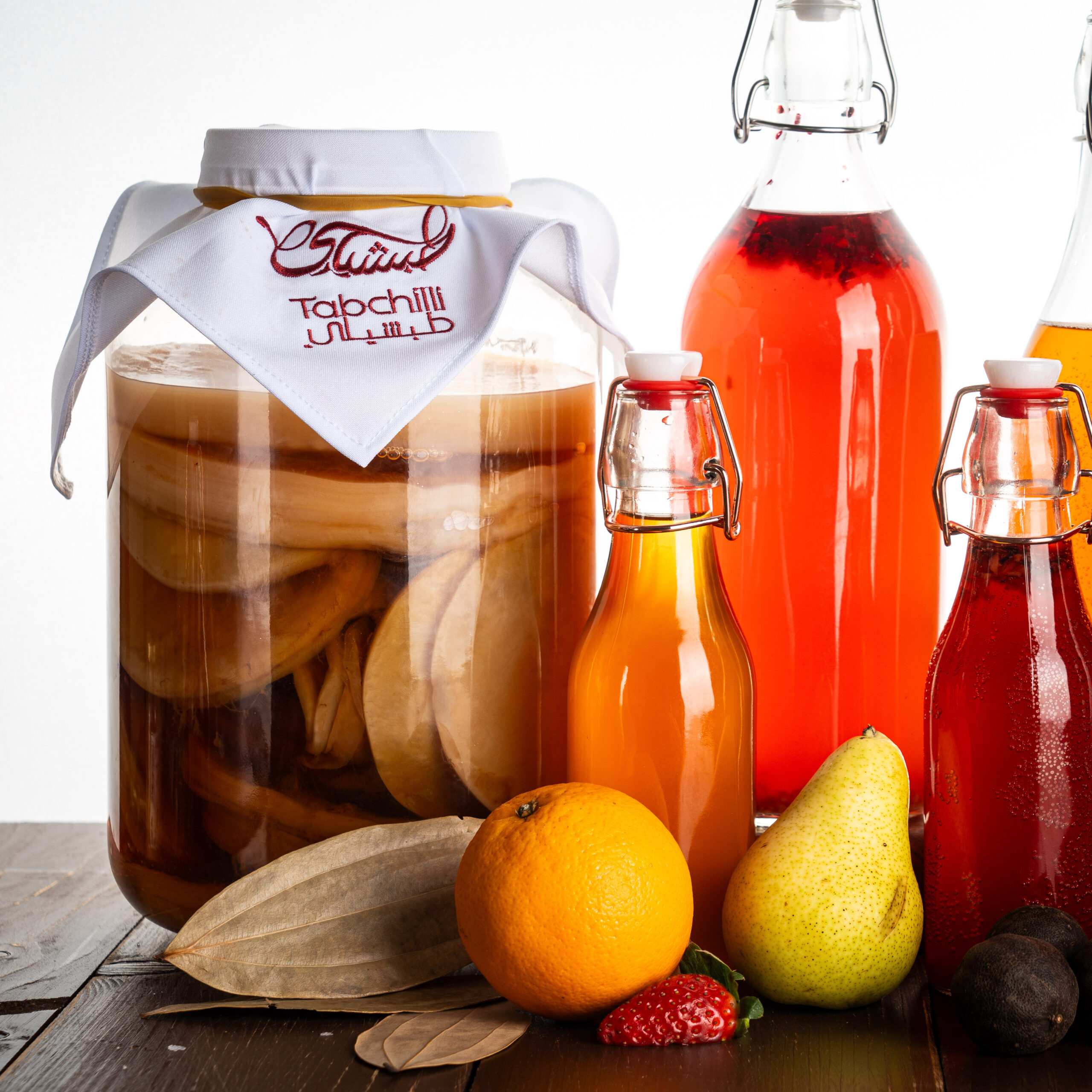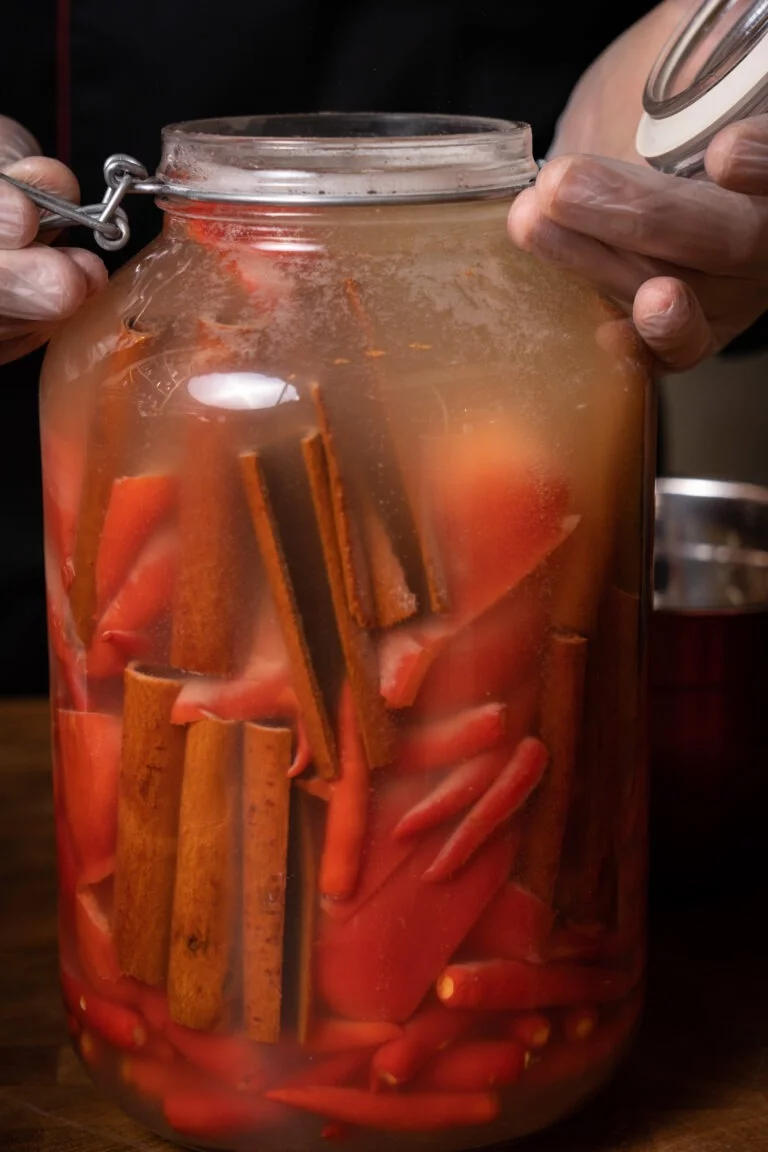In the quest for natural preservation methods, pickling and fermentation stand as time-honoured techniques that not only extend the shelf life of foods but also enhance their nutritional value and flavour. At Tabchilli, we champion the movement towards a healthier planet and better health through the practice of fermentation.
This article delves into the histories, differences, similarities, and nutritional aspects of pickling and fermentation to demonstrate why fermentation, in particular, is the superior choice for those seeking both flavour and health benefits.

Historical Background:
1. Pickling: Pickling, the process of preserving foods by immersion in vinegar or a brine (saltwater solution), has roots dating back to ancient civilizations. Historical records suggest that as early as 2400 B.C., the Mesopotamians used vinegar to preserve foods. The technique was employed by many ancient cultures, including Egyptians and Greeks, to preserve everything from cucumbers to meats.
2. Fermentation: Fermentation is arguably even more ancient, with evidence suggesting that early civilizations such as the Babylonians were making fermented beverages around 5000 B.C. This process involves the conversion of carbohydrates to alcohols and carbon dioxide or organic acids using yeasts, bacteria, or a combination thereof, under anaerobic conditions. Cultures around the world have used fermentation to preserve dairy products, vegetables, and meats in forms that we continue to enjoy today.
Comparing Pickling and Fermentation:
1. Preservation Method:
• Pickling: Uses vinegar or a saline solution to create an acidic environment that inhibits bacterial growth.
• Fermentation: Relies on natural or added bacteria to convert sugars into acids, creating a naturally acidic environment.
2. Flavor Development:
• Pickling: Typically results in a sharp, tangy taste due to the use of vinegar.
• Fermentation: Produces complex flavors through the metabolic processes of bacteria, often resulting in a deeper, richer taste.
3. Nutritional Value:
• Pickling: Can preserve nutrients, but the high acidity and heat can degrade or leach out vitamins.
• Fermentation: Often increases the levels of vitamins and introduces beneficial enzymes and probiotics.
4. Health Benefits:
• Pickling: Provides basic gut health benefits through acetic acid.
• Fermentation: Offers enhanced gut health benefits due to live probiotics that support the digestive system and improve gut flora.
5. Time for Processing:
• Pickling: Can be quick, especially with modern methods that use vinegar.
• Fermentation: Requires a longer process, often taking several days to weeks, allowing for the full development of flavors.
Commonalities Between Pickling and Fermentation:
1. Natural Preservation: Both methods extend the shelf life of perishable foods.
2. Enhanced Flavors: Both introduce new, often improved, flavors to the original foods.
3. Cultural Significance: Each technique has a rich history and is deeply rooted in various cultures worldwide.
4. Economic Benefits: They offer economical ways to preserve seasonal foods for year-round use.
5. Sustainability: Both methods reduce food waste by preserving excess produce.
Types of Pickled vs. Fermented Foods:

1. Pickled Foods:
• Cucumbers: The classic pickled cucumber or “pickle” is perhaps the most familiar pickled food.
• Carrots: Often pickled in a mix of vinegar, sugar, and spices.
• Onions: Commonly pickled in vinegar and served as a condiment.
• Cauliflower and Other Vegetables: Mixed vegetable pickles often include a variety of spices and seasoning.
• Fruits: Such as pickled plums and cherries, which are popular in some cultures.
2. Fermented Foods:
• Sauerkraut: Fermented cabbage, known for its digestive benefits.
• Kimchi: A Korean staple that includes fermented cabbage along with radishes and other ingredients.
• Kefir: A fermented milk drink with a tangy flavor.
• Kombucha: A fermented tea that is rich in probiotics and antioxidants.
• Miso: A Japanese seasoning produced by fermenting soybeans with salt and a fungus known as koji.
Example of Fermenting vs. Pickling Cucumbers:
•Fermenting Cucumbers:
• Process: Cucumbers are placed in a saltwater brine with spices, sealed loosely, and left to ferment at room temperature. Beneficial bacteria convert sugars into lactic acid.
• Result: Known as “sour pickles,” these cucumbers develop a tangy, complex flavor and contain live probiotics.
• Pickling Cucumbers:
• Process: Cucumbers are submerged in a vinegar solution with spices, then sealed and sometimes processed for shelf stability.
• Result: Known as “vinegar pickles,” these cucumbers have a sharp tang and lack probiotics.
Nutritional Insight and Probiotic Content:

While both pickling and fermentation enhance the preservation and taste of food, fermentation is particularly notable for its health benefits. Fermented foods are rich in probiotics, beneficial bacteria that play an essential role in gut health, immunity, and overall well-being. Unlike pickled foods, which often contain only vinegar-induced bacteria, fermented foods include a variety of live organisms that contribute to a healthier gut microbiome.
Flavor Profiles:
Fermentation not only preserves but also transforms the flavor of foods, creating products with unmatched depth and complexity. For example, sauerkraut and kimchi offer flavors that are both tangy and earthy, with nuances that simply cannot be achieved through pickling alone.
Conclusion:

At Tabchilli, we are committed to supporting a healthier planet and promoting better health through the ancient art of fermentation. While pickling has its merits, fermentation stands out as a superior preservation method that enriches the nutritional profile and flavor of foods. By embracing fermentation, we encourage a movement towards more sustainable living practices and a deeper appreciation for the foods we eat. Join us in this healthful journey, where each bite is a step towards a healthier world.
This exploration into the depths of pickling and fermentation not only highlights the unique benefits of each method but also solidifies why fermentation, particularly through initiatives like Tabchilli, is pivotal for future food sustainability and global health.
1% of each order supports children with juvenile arthritis.